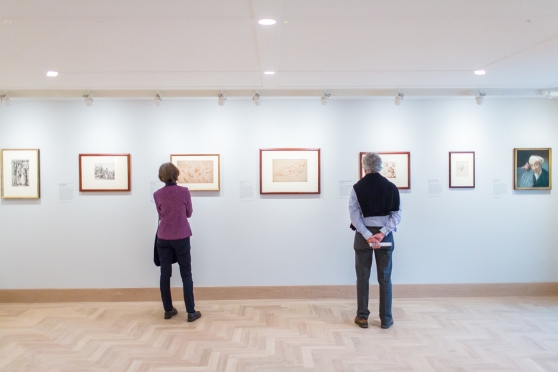At the end of this unit, there will be an exhibition, displaying everybody in my college class’s final image from this Final Major Project. There are a multitude of ways in which artwork can be displayed, and in this case study I will write about what the most common forms of exhibiting photographs and paintings to the general public are, and what specific method I shall be using in the approaching exhibition taking place in the reception of my college.
The most well known and commonly used way of presenting artwork is by framing it, and hanging it up on walls. This is used in museums, galleries, and just generally in common areas such as schools, stores and houses. I recently attended a David Hockney exhibition in London, Southbank, at the museum of Tate. In this exhibition, the paintings, drawings, and videos were propped up in frames or screens on walls. I find this to be the most convenient form of looking at artwork, as it tends to be at eye level with the typical adult human, and allows the artwork to not risk getting damaged, e.g, if the art was instead placed on the floor, it is susceptible to damage upon contact. This particular way of presenting artwork is what I intend on doing in the exhibition later on this year, and to my knowledge the majority of the class will also be following this basic format. An example of what this famous style of displaying photographs and paintings can be seen in the images below:

Another way in which art can be displayed is through the form of a 3D (three dimensional) sculpture. I know that at least one member of my class is presenting their work through the means of a sculpture of an elephant. The meaning behind this is due to their project being on mental health issues, and the elephant represents the ‘elephant in the room’ in terms of the ignorance of the general public’s knowledge of mental health issues. I briefly considered this at the start of the unit, but given that my idea was a photomosaic, I found it difficult to think of a way in which I could present this idea in this format, therefore I stuck with the 2D print. I am very interested, however, to see the sculpture that my peer has created, and how it will be presented along with the rest of our photographs in the exhibition in the next few weeks.
Below is an example of artwork being presented on a sculpture, this particular form of art can also be seen in museums, galleries, and when it comes to large statues, can be found in largely populated and public areas, such as parks, streets, towns, schools, universities, graveyards, churches, and public gardens. Whilst perhaps not the most convenient way of showing a photography or painting project, sculptures are nevertheless generally very creative, fun, and interesting to behold, and they are my personal favourite way of showing and displaying the artists feelings, message and overall reasons behind their art.
